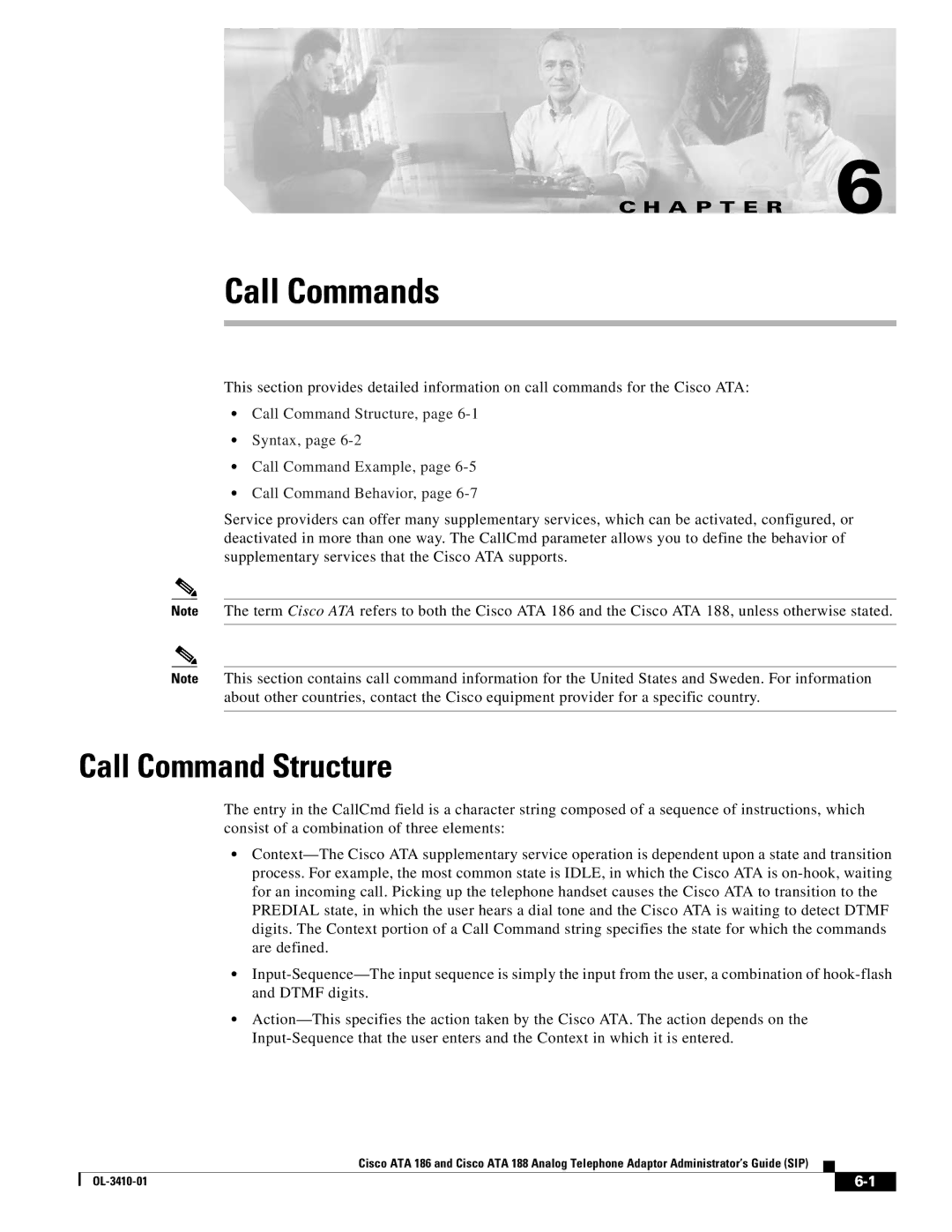
C H A P T E R 6
Call Commands
This section provides detailed information on call commands for the Cisco ATA:
•Call Command Structure, page
•Syntax, page
•Call Command Example, page
•Call Command Behavior, page
Service providers can offer many supplementary services, which can be activated, configured, or deactivated in more than one way. The CallCmd parameter allows you to define the behavior of supplementary services that the Cisco ATA supports.
Note The term Cisco ATA refers to both the Cisco ATA 186 and the Cisco ATA 188, unless otherwise stated.
Note This section contains call command information for the United States and Sweden. For information about other countries, contact the Cisco equipment provider for a specific country.
Call Command Structure
The entry in the CallCmd field is a character string composed of a sequence of instructions, which consist of a combination of three elements:
•
•
•
Cisco ATA 186 and Cisco ATA 188 Analog Telephone Adaptor Administrator’s Guide (SIP)
|
| ||
|
|
